Ditapis dengan

The impact of RFID utilization and supply chain information sharing on supply…
The purpose of this research is to remove barriers hindering radio frequency identification (RFID) adoption/diffusion in industries, and help firms develop effective supply chain management (SCM) practices utilizing RFID, by elucidating the specific mechanisms through which RFID influences supply chain performance (SCP). On the basis of the technology-organization-environment framework, this re…
- Edisi
- Vol. 18, 1, 78–100
- ISBN/ISSN
- 1479-2931
- Deskripsi Fisik
- 23 p.
- Judul Seri
- Maritime Economics & Logistics
- No. Panggil
- ATC LO KIM t

Two-Stage Supply Chain Network Design Problem with Interval Data
Supply chain is usually represented by a network (which is called supply chain network) that contains some nodes. In a supply chain network these nodes are suppliers, plants, distribution centers and customers which are some facilities connected by some arcs to each other. The arcs connect the nodes in the direction of their production flow, meaning that each arc shows a route between the facil…
- Edisi
- 5 (2016)
- ISBN/ISSN
- 074 – 084
- Deskripsi Fisik
- 11 p.
- Judul Seri
- International Journal of e-Navigation and Maritim Economy
- No. Panggil
- ATC LO SAN t

The terminalization of supply chains: reassessing the role of terminals in po…
The paper discusses how logistics service providers are using terminals in their supply chains. It argues that an increasing ‘terminalization’ of supply chains is unfolding, whereby seaport and inland terminals are taking up a more active role in supply chains by increasingly confronting market players with operational considerations such as imposing berthing windows, dwell time charges, tr…
- Edisi
- VOL. 36, NO. 2, 165–183
- ISBN/ISSN
- 1464–5254
- Deskripsi Fisik
- 21 p.
- Judul Seri
- Maritime Policy & Management: The flagship journal of international shipping and port research
- No. Panggil
- ATC LO ROD t

Sustainability assessment of food chain logistics
Food chain logistics plays an important role in the sustainability performance of the food sector. Therefore, project SCALE (Step Change in Agri-food Logistics Ecosystems) started as a collaborative international project, aiming for tools and frameworks for the food sector to make a step change in operational practices. A sustainability framework is introduced to propose a structured and ration…
- Edisi
- Vol. 18, No. 2, 101–117
- ISBN/ISSN
- 1469-848X
- Deskripsi Fisik
- 18 p.
- Judul Seri
- International Journal of Logistics Research and Applications
- No. Panggil
- ATC LO BLO s

Perception of Malaysian Food Manufacturers Toward Halal Logistics
This article measures the perception of Malaysian food manufacturers toward halal logistics through an industry survey conducted in Malaysia. Based on a survey with 44 food manufacturers in Malaysia, results indicate that the responsibility of halal logistics according to the manufacturer is a shared responsibility in the halal food supply chain and value chain. Second, the study confirms that …
- Edisi
- 26:218–233, 2014
- ISBN/ISSN
- 1528-6983
- Deskripsi Fisik
- 17 p.
- Judul Seri
- Journal of International Food & Agribusiness Marketing
- No. Panggil
- ATC LO TIE p.

Understanding supply chain management concepts in the context of port logisti…
In academia as in practice, seaports are increasingly viewed as elements in supply chains. It is argued that seaports should add value to shippers by aligning their own business activities with shippers’ Supply Chain Management (SCM) strategies and requirements. The implications of this ‘port-SCM’ philosophy are not fully explored, however. In this context, it is especially important to c…
- Edisi
- 2014 Volume 29(4): 376–385
- ISBN/ISSN
- 1648-3480
- Deskripsi Fisik
- 11 p.
- Judul Seri
- Transport
- No. Panggil
- ATC LO HER u

Interorganizational Governance Value Creation: Coordinating for Information V…
More thoroughly understanding howinterorganizational governance value can be created by information technology and other governance mechanisms is critical for supply chain management. Based primarily on transaction-cost economics and supplemented by the resource-based view, this study investigates how interorganizational governance (i.e., relational governance and virtual integration) can creat…
- Edisi
- Volume 38 Number 4 November 2007
- ISBN/ISSN
- -
- Deskripsi Fisik
- 28 p.
- Judul Seri
- Interorganizational Governance Value Creation
- No. Panggil
- ATC LO WAN i

Interorganizational Collaborative Forecasting and Replenishment Systems and S…
Collaborative Forecasting and Replenishment (CFAR) is a new interorganizational system that enables retailers and manufacturers to forecast demand and schedule production jointly. The capabilities of CFAR exceed those of the traditional ED1 because CFAR allows exchange of complex decision support models and manufacturerhetailer strategies. The proponents of CFAR claim that the fastest way for r…
- Edisi
- Volume 30 Number 4 Fall 1999
- ISBN/ISSN
- -
- Deskripsi Fisik
- 19 p.
- Judul Seri
- Forecasting and Replenishment System
- No. Panggil
- ATC LO SRI i

Global supply chain and port/terminal: integration and competitiveness
Much has been said of the importance of port and terminal integration in the supply chain. Authors have stressed the importance of agility to the port environment, which involves being proactive along supply chains, facilitation of intermodal integration, as well as organizational integration and partnership between ports and users. Despite the well articulated importance of the issues, littl…
- Edisi
- VOL. 35, NO. 1, 73–87
- ISBN/ISSN
- 1464–5254
- Deskripsi Fisik
- 16 p.
- Judul Seri
- Maritime Policy & Management: The flagship journal of international shipping and port research
- No. Panggil
- ATC LO SON g

Information Technology as the Main Competence in the Design of the Strategic …
The creation of logistical support structures aims to help improve the performance of logistics along supply chains, a context where the Logistics Platforms have been gaining increasing prominence. A frequent difficulty in these ventures is to align strategic planning with the flow of cargo and the ability of the adjacent port areas. Aiming to contribute to the understanding of the importance o…
- Edisi
- 2013, Volume 8, Issue 3
- ISBN/ISSN
- 0718-2724
- Deskripsi Fisik
- 13 p.
- Judul Seri
- Journal of Technology Management and Innovation
- No. Panggil
- ATC LO VAR i

CONNECTING SMALL AND MEDIUM ENTERPRISES TO THE GLOBAL MARKET VIA THE GLOBAL L…
Developing countries, such as Taiwan, Singapore and Korea, are transforming to a multi-faceted consumer economy where financial services, medical services, research and development, education, distribution services, international business, technology product development and design, and retail development are fueling economic growth. The logistic and distribution services as a result have become…
- Edisi
- Vol. 19, No. 5, pp. 75-87 (2002)
- ISBN/ISSN
- -
- Deskripsi Fisik
- 15 p.
- Judul Seri
- Journal of the Chinese Institute of Industrial Engineers
- No. Panggil
- ATC LO HOU c

Characteristics of Swedish forest biomass terminals for energy
Forest biomass terminals provide diverse services to the forest industry: buffer storage, transfers of material between different modes of transport, raw material upgrading, etc. Terminals’ operational costs are highly sensitive to their layout and design. In order to design efficient terminals, it will be essential to understand the current state of forest terminals. To this end, a survey wa…
- Edisi
- Vol. 25, No. 3, 238–246
- ISBN/ISSN
- 1913-2220
- Deskripsi Fisik
- 10 p.
- Judul Seri
- International Journal of Forest Engineering
- No. Panggil
- ATC LO KON c

Assessing a cross-border logistics policy using a performance measurement sys…
For the most rapidly growing economic entity in the world, China, a new logistics operation called the indirect cross-border supply chain model has recently emerged. The primary idea of this model is to reduce logistics costs by storing goods at a bonded warehouse with low storage cost in certain Chinese regions, such as the Pearl River Delta (PRD). This research proposes a performance measurem…
- Edisi
- Vol. 45, No. 6, 1306–1320
- ISBN/ISSN
- -
- Deskripsi Fisik
- 16 p.
- Judul Seri
- International Journal of Systems Science
- No. Panggil
- ATC LO WON a

An Activity-Based Costing Model for Logistics Operations of Manufacturers and…
The logistics costs of industrial enterprises in a supply chain are studied. The following aspects of logistics costs are included: an ABC (Activity-Based Costing) calculation model for logistics; average logistics costs of Finnish industrial manufacturers and suppliers; the factors which in¯ uence a company’s cost ef® ciency in logistics; and an ABC simulation model for the logistics costs…
- Edisi
- Vol. 3, No. 1, 2000
- ISBN/ISSN
- 1469-848X
- Deskripsi Fisik
- 15p
- Judul Seri
- International Journal of Logistics Research and Applications: A Leading Journal of Supply Chain Management
- No. Panggil
- ATC LO MAN a

Planning and Scheduling for Maritime Container Yards Supporting and Facilitat…
This book contains six chapters that can be used on a self-contained basis as teaching cases in an undergraduate or specialist class setting on OR techniques applied to maritime container operations or for port operations. Instructors and students can look forward to an insightful presentation of the challenges facing the maritime supply chains and container port logistics service providers in …
- Edisi
- 2015
- ISBN/ISSN
- 978-3-319-17025-1
- Deskripsi Fisik
- 116P
- Judul Seri
- Planning and Scheduling for Maritime Container Yards
- No. Panggil
- TXT PO WEN p

Supply Chain Construction The Basics for Networking the Flow of Material, Inf…
The primary purpose of this book is to teach those unskilled in the art the basics of how to construct a new supply chain from scratch and begin its operation successfully. A secondary purpose of this book is to teach those with some practical business experience the basics of how to successfully modify an existing supply chain and continue its operation competitively
- Edisi
- 20150601
- ISBN/ISSN
- 13: 978-1-4822-4047-
- Deskripsi Fisik
- 484P
- Judul Seri
- Supply Chain Construction
- No. Panggil
- TXT LO WAL s

Preliminary study on new container stacking/storage system due to space limit…
The purpose of this study is to introduce a new innovative means of container stacking/ storage as a potential solution for overcoming the lack of container yard space.
- Edisi
- Vol. 1 No. 1, 2016 pp. 21-39
- ISBN/ISSN
- 2397-3757
- Deskripsi Fisik
- 20P
- Judul Seri
- Maritime Business Review
- No. Panggil
- ATC PO RAH p

Maritime Logistics and Supply Chain Security
Despite a hangover from the worldwide economic crisis, international trade rebounded nicely with a record-level growth in late 2010. A sharp rise in international trade has sparked the international traffic growth. A majority of this traffic growth originated from maritime logistics which could move cargoes in large volume and at cheaper freight costs. Due to its cost-efficiency and easy acces…
- Edisi
- 2012
- ISBN/ISSN
- 978-1-78052-340-8
- Deskripsi Fisik
- 27 P
- Judul Seri
- Maritime Logistics
- No. Panggil
- ATC LO MIN m

Evaluation of alternative logistics operations for the national supply of an …
One result of the continuing current competitive environment in Australia is cost pressure on the supply of manufacturing commodities such as anhydrous sodium sulphate. Commodity suppliers do not have much scope for providing value-added services. Anhydrous sodium sulphate, for example, is mostly brought to the customer’s attention when negative service characteristics occur – stocks run lo…
- Edisi
- Vol. 28 No. 5, 1998, pp. 382-395
- ISBN/ISSN
- 0960-0035
- Deskripsi Fisik
- 15 p
- Judul Seri
- International Journal of Physical Distribution & Logistics Management
- No. Panggil
- ATC LO GIL e

Supply Chain Optimization through Segmentation and Analytics
In a meeting with a COO (Chief Operating Officer) the author was told, “We have had dozens of consulting companies through here, each telling us that they know the best way to solve our productivity and logistics problems. But every one of them only solves a small part of the problem. Are you going to come in here and give me another solution that fixes a part of our problem but leaves us mis…
- Edisi
- 2014
- ISBN/ISSN
- 13: 978-1-4665-8477-
- Deskripsi Fisik
- 246P
- Judul Seri
- Series on Resource Management
- No. Panggil
- TXT MG PLE s

Supply chain integration, landside operations and port accessibility in metro…
Seaports have traditionally been the focus of maritime logistics supply chains. Changing production patterns demanding greater end to end visibility by customers and accessibility to key inland population centers assume greater importance in the organization and design of transport resources and cargo flows.While synchronization of all aspects of the supply chain has become an operational neces…
- Edisi
- -
- ISBN/ISSN
- 0966-6923
- Deskripsi Fisik
- 10 p.
- Judul Seri
- Journal of Transport Geography
- No. Panggil
- ATC PO OTT s

Efficient consumer response: managing the supply chain for “ultimate” con…
Presents a case study of the marketing strategy of Birds Eye Wall’s and its focus on functional and service-related aspects of its trading relationships. Stresses the importance of the efficient consumer response process towards achieving both customer satisfaction and business efficiency and success. Details the use of extensive research and data analysis to forecast, measure, model and rev…
- Edisi
- Volume 1 · Number 2 · 1996 · pp. 11-14
- ISBN/ISSN
- 1359-8546
- Deskripsi Fisik
- 6 p .
- Judul Seri
- Supply Chain Management: An International Journal
- No. Panggil
- ATC MGPEA e C.1

Managing port-related supply chain disruptions (PSCDs) : a management model a…
In the contemporary port business environment, port resilience is of paramount importance for supply chain continuity. A result of the increased integration of ports into supply chains is ports’ potential to supply chain disruptions. This paper introduces a PSCD management model that incorporates the application of risk management, business continuity management, and quality management theori…
- Edisi
- VOL. 43, NO. 4, 436–455
- ISBN/ISSN
- 1464-5254
- Deskripsi Fisik
- 21 p.
- Judul Seri
- Maritime Policy & Management
- No. Panggil
- ATC PO LOH m
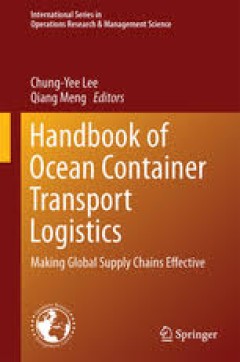
Handbook of ocean container transport logistics: making global supply chains …
- Edisi
- -
- ISBN/ISSN
- 2214-7934
- Deskripsi Fisik
- xvii, 552 p.
- Judul Seri
- -
- No. Panggil
- TXT LO LEE h
- Edisi
- -
- ISBN/ISSN
- 2214-7934
- Deskripsi Fisik
- xvii, 552 p.
- Judul Seri
- -
- No. Panggil
- TXT LO LEE h
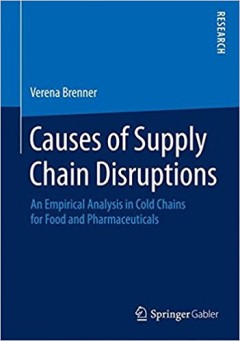
Causes of supply chain disruptions : an empirical analysis in cold chains for…
- Edisi
- -
- ISBN/ISSN
- 978-3-658-08662-6
- Deskripsi Fisik
- xvi, 323 p.
- Judul Seri
- -
- No. Panggil
- TXT LO BRE c
- Edisi
- -
- ISBN/ISSN
- 978-3-658-08662-6
- Deskripsi Fisik
- xvi, 323 p.
- Judul Seri
- -
- No. Panggil
- TXT LO BRE c

Supply chain management and transport logistics
- Edisi
- -
- ISBN/ISSN
- 978–0–203–80586–2
- Deskripsi Fisik
- -
- Judul Seri
- -
- No. Panggil
- TXT LO LIU s
- Edisi
- -
- ISBN/ISSN
- 978–0–203–80586–2
- Deskripsi Fisik
- -
- Judul Seri
- -
- No. Panggil
- TXT LO LIU s

the Palgrave handbook of humanitarian logistics and supply chain management
- Edisi
- -
- ISBN/ISSN
- 978-1-137-59099-2
- Deskripsi Fisik
- -
- Judul Seri
- -
- No. Panggil
- TXT LO KOV p
- Edisi
- -
- ISBN/ISSN
- 978-1-137-59099-2
- Deskripsi Fisik
- -
- Judul Seri
- -
- No. Panggil
- TXT LO KOV p

Port-focal logistics and global supply chains
- Edisi
- -
- ISBN/ISSN
- 978-1-137-27369-7
- Deskripsi Fisik
- xx, 240 p.
- Judul Seri
- -
- No. Panggil
- TXT LO ADO p
- Edisi
- -
- ISBN/ISSN
- 978-1-137-27369-7
- Deskripsi Fisik
- xx, 240 p.
- Judul Seri
- -
- No. Panggil
- TXT LO ADO p
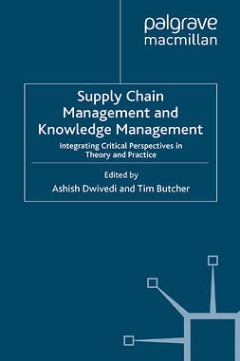
Supply chain management and knowledge management
- Edisi
- -
- ISBN/ISSN
- 978-0-230-23495-6
- Deskripsi Fisik
- xxx, 309 p.
- Judul Seri
- -
- No. Panggil
- TXT MG DWI s
- Edisi
- -
- ISBN/ISSN
- 978-0-230-23495-6
- Deskripsi Fisik
- xxx, 309 p.
- Judul Seri
- -
- No. Panggil
- TXT MG DWI s
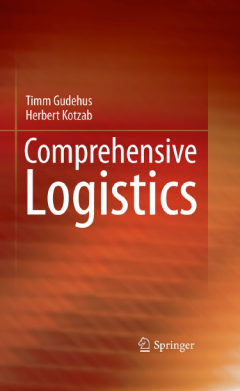
Comprehensive logistics
- Edisi
- -
- ISBN/ISSN
- 978-3-540-68652-1
- Deskripsi Fisik
- -
- Judul Seri
- -
- No. Panggil
- TXT LO KOT c
- Edisi
- -
- ISBN/ISSN
- 978-3-540-68652-1
- Deskripsi Fisik
- -
- Judul Seri
- -
- No. Panggil
- TXT LO KOT c
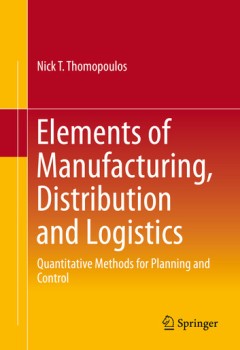
Elements of danufacturing, distribution and logistics: quantitative methods f…
- Edisi
- -
- ISBN/ISSN
- 978-3-319-26862-0
- Deskripsi Fisik
- -
- Judul Seri
- -
- No. Panggil
- TXT LO THO e
- Edisi
- -
- ISBN/ISSN
- 978-3-319-26862-0
- Deskripsi Fisik
- -
- Judul Seri
- -
- No. Panggil
- TXT LO THO e
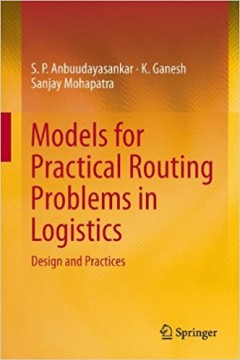
Models for practical routing problems in logistics: design and practice
- Edisi
- -
- ISBN/ISSN
- 978-3-319-05035-5
- Deskripsi Fisik
- -
- Judul Seri
- -
- No. Panggil
- TXT LO ANB m
- Edisi
- -
- ISBN/ISSN
- 978-3-319-05035-5
- Deskripsi Fisik
- -
- Judul Seri
- -
- No. Panggil
- TXT LO ANB m

Supply chain cases: leading authors, research themes and future direction
- Edisi
- -
- ISBN/ISSN
- 978-3-319-71658-9
- Deskripsi Fisik
- -
- Judul Seri
- -
- No. Panggil
- TXT LO Hil s
- Edisi
- -
- ISBN/ISSN
- 978-3-319-71658-9
- Deskripsi Fisik
- -
- Judul Seri
- -
- No. Panggil
- TXT LO Hil s
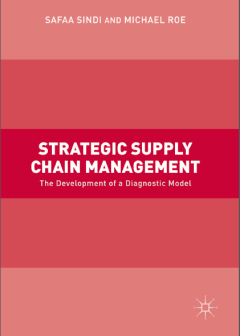
Strategic supply chain management: the development of diagnostics model
- Edisi
- -
- ISBN/ISSN
- 978-3-319-54843-2
- Deskripsi Fisik
- -
- Judul Seri
- -
- No. Panggil
- TXT MG Sin s
- Edisi
- -
- ISBN/ISSN
- 978-3-319-54843-2
- Deskripsi Fisik
- -
- Judul Seri
- -
- No. Panggil
- TXT MG Sin s
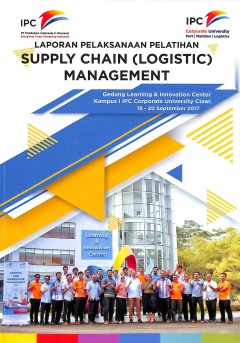
Laporan Pelaksanaan Pelatihan : Supply Chain (Logistic) Management
- Edisi
- 18 -20 September 2017
- ISBN/ISSN
- -
- Deskripsi Fisik
- 15 p., + atc., 21 cm.
- Judul Seri
- -
- No. Panggil
- IPC REP 2017 SUP s
- Edisi
- 18 -20 September 2017
- ISBN/ISSN
- -
- Deskripsi Fisik
- 15 p., + atc., 21 cm.
- Judul Seri
- -
- No. Panggil
- IPC REP 2017 SUP s

Supply chain logistics risks from the back room to the board room
Risks and uncertainties are ever more noted and factored into decision making today, and those stemming from supply chains are prominent in the competitiveness and viability of companies and organizations. The idea that every supply chain is made up of five internal chain/network constructs is presented, and these are physical, financial, informational, relational, and innovational. Further, fo…
- Edisi
- Vol. 34 No. 5, 2004
- ISBN/ISSN
- -
- Deskripsi Fisik
- 10 p.
- Judul Seri
- International Journal of Physical Distribution & Logistics Management
- No. Panggil
- ATC LO CAV s

The moderating role of supply network structure on the customer integration-e…
The purpose of this paper is to study whether a fast supply network structure interacts with customer integration (CI) by positively moderating the relationship between CI and efficiency performance.
- Edisi
- Vol. 33 No. 4, 2013
- ISBN/ISSN
- -
- Deskripsi Fisik
- 24 p.
- Judul Seri
- International Journal of Operations & Production Management
- No. Panggil
- ATC LO DAN t

Effective supply chain research via the quick scan audit methodology
This paper aims to provide an answer to the important question of how can accurate assessment of supply chain practice and performance be conducted? By conducting audits across a sample of value streams it is thereby possible to identify the components of “good practice” via evidencebased procedures.
- Edisi
- Vol. 16 Iss 1 pp. 5 - 10
- ISBN/ISSN
- -
- Deskripsi Fisik
- 8 p.
- Judul Seri
- Supply Chain Management: An International Journal
- No. Panggil
- ATC LO TOW e

Educating the supply chain logistics for humanitarian efforts in Africa: a ca…
There are gaps in the countries of Africa between basic universal health care and what is provided. Educating those who are trying to help is important to bring about change. Recently, there are many organizations and individuals responding to those needs, including governmental and non-governmental organizations (NGO). These entities strive to improve the conditions of the African people by pr…
- Edisi
- Vol. 58 No. 5, 2009
- ISBN/ISSN
- -
- Deskripsi Fisik
- 23 p.
- Judul Seri
- International Journal of Productivity and Performance Management
- No. Panggil
- ATC LO PET r

eBusiness and supply chain integration
The purpose of this study is to examine how four large organisations have approached the implementation of new eBusiness mechanisms: namely online order processing, eProcurement, reverse auctions, and a private exchange. The objectives are to establish whether supply chain integration is an identified goal for the firms involved and to evaluate the extent of integration achieved through these p…
- Edisi
- Vol. 21 No. 3, 2008
- ISBN/ISSN
- -
- Deskripsi Fisik
- 22 p.
- Judul Seri
- Journal of Enterprise Information Management
- No. Panggil
- ATC LO SMA e

Distribution network design: a literature review and a research agenda
The purpose of this paper is threefold. First, it classifies research on distribution network design (DND) according to the methodologies adopted and themes tackled. Second, it discusses the main implications for practitioners. Finally, it proposes a few promising directions for future research.
- Edisi
- Vol. 45 No. 5, 2015
- ISBN/ISSN
- -
- Deskripsi Fisik
- 28 p .
- Judul Seri
- International Journal of Physical Distribution & Logistics Management
- No. Panggil
- ATC LO PER d

Controlling the sustainability of food supply chains
For the food industry, the depletion of arable land and a growing world population demand controlling the sustainability of agricultural inputs to the industry. Controlling the sustainability of these supplies means controlling the economic, social, and environmental performance of the supply chain. In practice, little is known about how companies can efficiently extend their existing supply ch…
- Edisi
- Vol. 10 Iss 1 pp. 7 - 10
- ISBN/ISSN
- -
- Deskripsi Fisik
- 7 p.
- Judul Seri
- Supply Chain Management: An International Journal
- No. Panggil
- ATC LO MEI c

Supply Chain Security Orientation: Conceptual Development And A Proposed Fram…
This paper aims to report on an exploratory study investigating supply chain security orientation (SCSO), a firm-level construct addressing companies’ multiple approaches toward mitigation of supply chain security breaches and supply chain risk management.
- Edisi
- Vol. 19 No. 1, 2008
- ISBN/ISSN
- -
- Deskripsi Fisik
- 27 p.
- Judul Seri
- The International Journal of Logistics Management
- No. Panggil
- ATC LO MIC s

Supply chain risks: a review and typology
Supply chain security (SCS), as a component of an organization’s overall supply chain risk management strategy, has become a critical factor for businesses and government agencies since September 11, 2001, yet little empirical research supports policy or practice for the field. Therefore, this paper develops and presents a categorization of SCS based on existing research. This categorization …
- Edisi
- Vol. 20 No. 1, 2009
- ISBN/ISSN
- -
- Deskripsi Fisik
- 34 p.
- Judul Seri
- The International Journal of Logistics Management
- No. Panggil
- ATC LO GOL s

Supply chain strategy, flexibility, and performance A comparative study of SM…
The purpose of this paper is to compare the supply chain strategy, flexibility, and performance relationships in the context of SMEs in Canada and Pakistan.
- Edisi
- Vol. 25 No. 2, 2014
- ISBN/ISSN
- -
- Deskripsi Fisik
- 20 p.
- Judul Seri
- The International Journal of Logistics Management
- No. Panggil
- ATC LO FAN s

Supply chain strategy in a global paper manufacturing company: a case study
The purpose of this paper is to analyze the relationship between corporate and supply chain strategy, as well as its implementation in a multinational paper producing company. Traditionally paper producing companies have had a strong interest in developing a physical infrastructure for their customer deliveries. However, supply chain thinking is still an unstructured issue in the case company.
- Edisi
- Vol. 109 No. 1, 2009
- ISBN/ISSN
- -
- Deskripsi Fisik
- 21 p .
- Judul Seri
- Industrial Management & Data Systems
- No. Panggil
- ATC LO KOS s

Supply chain services from a service-dominant perspective: a content analysis
This paper aims to apply service-dominant logic thinking to the field of supply chain management (SCM) in order to classify, structure, and analyze different types of supply chain services (SCS) collected from interdisciplinary literature. The authors investigate how value is co-created between supply chain actors and develop research propositions regarding the influence of service type on valu…
- Edisi
- Vol. 44 No. 1/2, 2014
- ISBN/ISSN
- -
- Deskripsi Fisik
- 24 p.
- Judul Seri
- International Journal of Physical Distribution & Logistics Management
- No. Panggil
- ATC LO STE s

Supply chain risk management: a new methodology for a systematic literature r…
Supply chain risk management (SCRM) has recently gained increasing attention in the supply chain context, both from the practitioners’ perspective and as a research area. Given the relevance of the topic, the aim of the present paper is to present a focused literature review, investigating the process of knowledge creation, transfer and development from a dynamic perspective within the contex…
- Edisi
- Volume 17 · Number 4 · 2012 · 403–418
- ISBN/ISSN
- -
- Deskripsi Fisik
- 19 p.
- Judul Seri
- Supply Chain Management: An International Journal
- No. Panggil
- ATC LO STR c

Supply chain networks and service-dominant logic: suggestions for future rese…
The service-dominant (S-D) logic views supply chains as value co-creation networks. These networks promote knowledge growth amongst network members via resource deployment and coordination. The exchange of knowledge and utilization of operant resources among the network members leads to co-created service offerings and value proposals for the end-users, with the ultimate goal of transforming en…
- Edisi
- Vol. 41 No. 7, 2011
- ISBN/ISSN
- -
- Deskripsi Fisik
- 13 p.
- Judul Seri
- International Journal of Physical Distribution & Logistics Management
- No. Panggil
- ATC LO BEI s

The shipping point : the rise of China and the future of retail supply chain …
The author, Peter Levesque, has over 20 years of international transportation and logistics experience and has been working in Hong Kong since 1996. Prior to joining Modern Terminals, he served at several management positions including American President Lines, DHL’s Supply Chain in Asia Pacific, CEVA Logistics, and co-founded a 3PL company, V-Logic Limited, in 2001. He also served as an Adju…
- Edisi
- Volume 28 Number 3 August 2012
- ISBN/ISSN
- -
- Deskripsi Fisik
- 6 p .
- Judul Seri
- The Asian Journal of Shipping and Logistics
- No. Panggil
- ATC LO SON t
 Karya Umum
Karya Umum  Filsafat
Filsafat  Agama
Agama  Ilmu-ilmu Sosial
Ilmu-ilmu Sosial  Bahasa
Bahasa  Ilmu-ilmu Murni
Ilmu-ilmu Murni  Ilmu-ilmu Terapan
Ilmu-ilmu Terapan  Kesenian, Hiburan, dan Olahraga
Kesenian, Hiburan, dan Olahraga  Kesusastraan
Kesusastraan  Geografi dan Sejarah
Geografi dan Sejarah